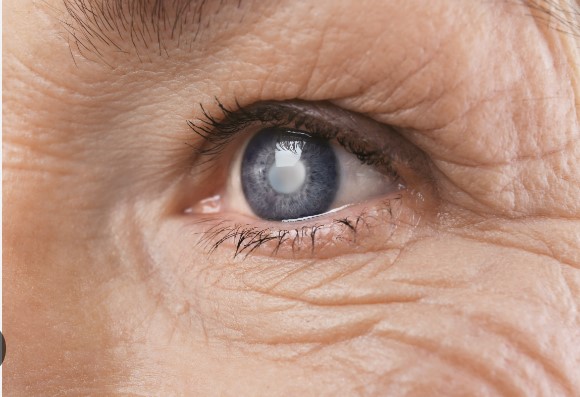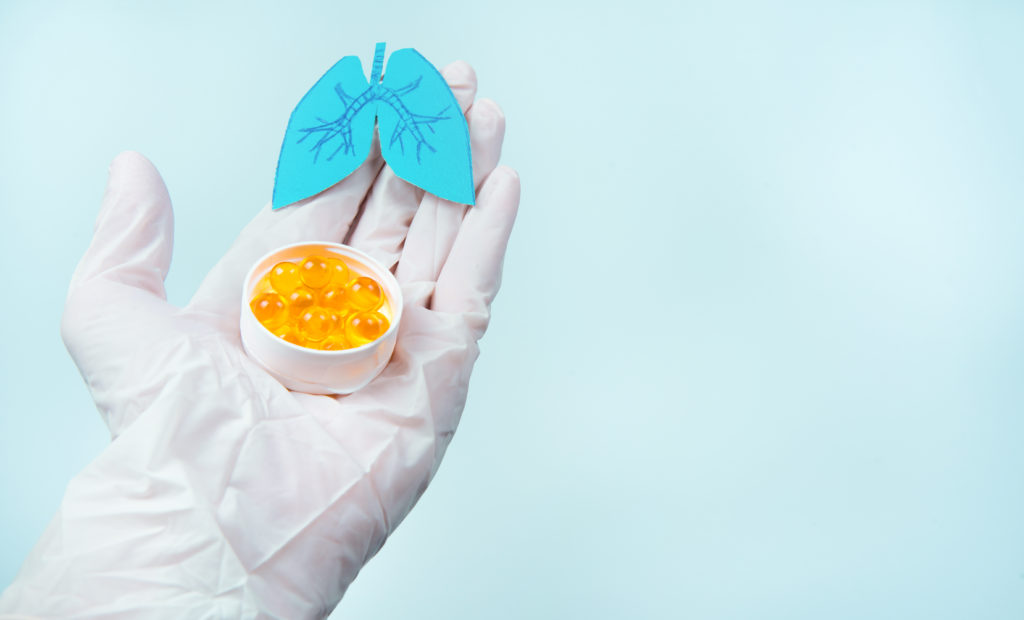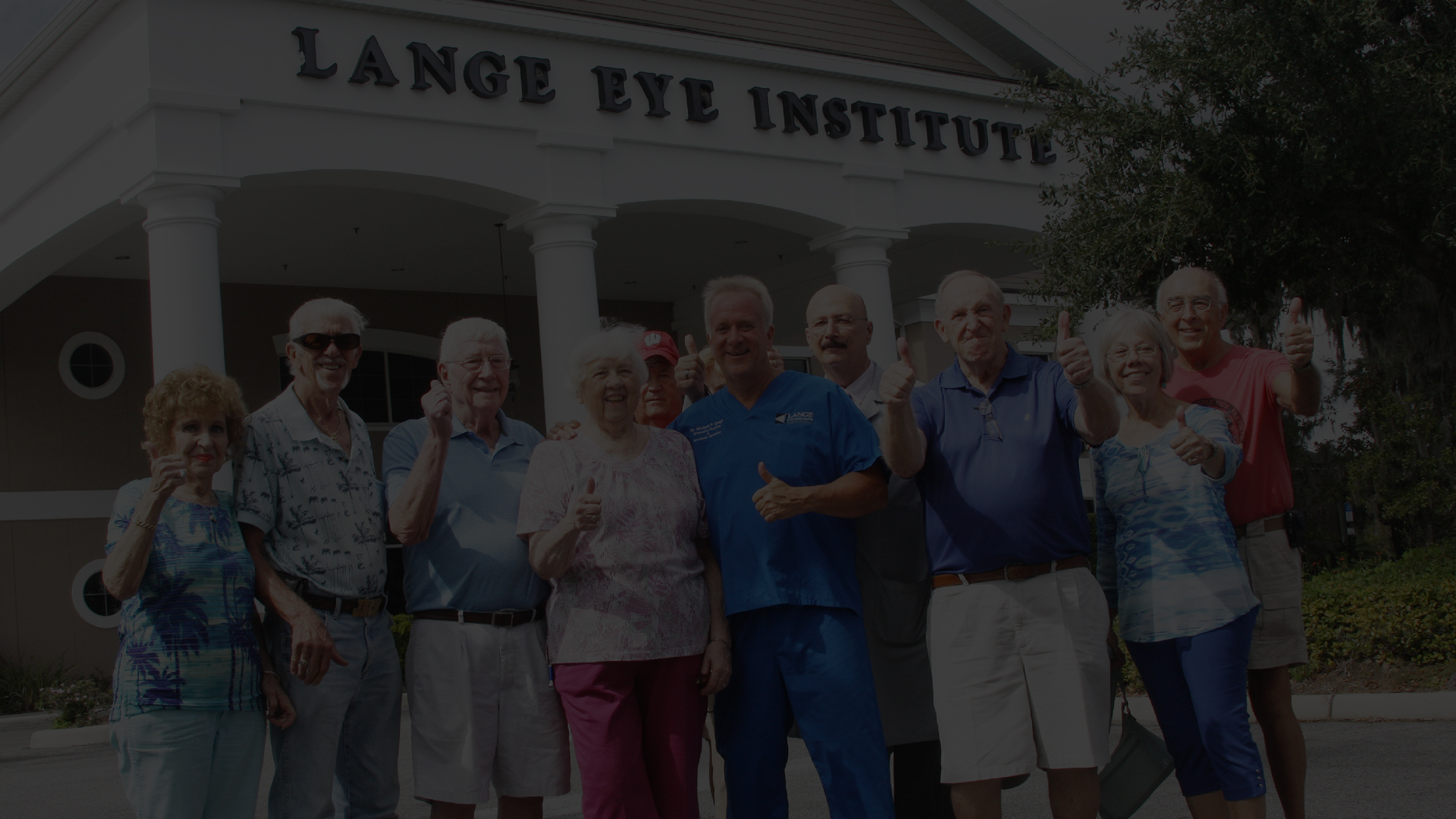Increased levels of zeaxanthin and lutein can reduce the risk of AMD.
But just how much is needed and, how do we measure results?
Tara Rosenzweig, Contributing Editor for Optometric Management magazine
It’s commonly understood: Levels of the macular pigments lutein and zeaxanthin correlate to agerelated macular degeneration risk (AMD). So, as a measure of prevention, should optometrists recommend dietary and supplemental intake of these important nutrients — carotenoids that protect against phototoxic blue light and near-ultraviolet radiation and which are found naturally in the macula?
And if so:
► How much of each is needed?
► Should the nutrients come from food, supplements or a combination of both?
► How can you determine the success of a supplement program? Should you consider the use of devices that measure the macular pigment optical density (MPOD)?
Here, experts on ocular nutrition and MPOD-measurement devices weigh in on these, among other common questions.
How much is enough?
It’s difficult for healthcare professionals and patients to know just how much lutein and zeaxanthin should be consumed on a daily basis. Supplements with lutein and zeaxanthin vary in nutrient content and packaging. For instance, they often accompany vitamins and nutrients, such as vitamins A, C, and E and zinc. And because no recommended daily intake for these nutrients exists, many O.D.s aren’t sure how much to recommend for optimal macular health benefits.
“In general, normal lutein/zeaxanthin supplements average in the 15 mg to 20 mg (range) for lutein and 2 mg to 4 mg for zeaxanthin,” says Jeffrey Anshel, O.D., F.A.A.O., president of the Ocular Nutrition Society. “Some supplement companies add more, but most of the science points to about these amounts.”
He adds the caveat: “Since lutein is sequestered in fat tissue, different patients may require different amounts.”
There’s no exact number, explains Paul S. Bernstein, M.D., Ph.D., Mary Boesche professor of Ophthalmology and Visual Sciences at Moran Eye Center at the University of Utah School of Medicine in Salt Lake City. “Based on epidemiology and studies on risk of macular degeneration, it’s generally come up somewhere between 6 mg and 10 mg [of each] a day. Those are the reasonable numbers.”
Dr. Bernstein and others say they hope that tests of 10 mg of lutein and 2 mg of zeaxanthin in the second Age Related Eye Disease Study (AREDS2) study will provide a definitive answer.
Michael Lange, O.D., C.N.S. (certified nutrition specialist), who owns Lange Eye Care and Associates in Florida and also founded Fortifeye Vitamins, recommends dosages by age and health status. For most patients, he says he advises 6 mg to 10 mg of lutein and 1 mg to 2 mg of zeaxanthin daily. But for patients with early-to-moderate AMD, he says he recommends 10 mg to 20 mg of lutein and 2 mg to 4 mg of zeaxanthin daily. For moderate-to-advanced AMD, he says he recommends 20 mg to 30 mg of lutein and 4 mg to 6 mg of zeaxanthin.
But are lutein and zeaxanthin equally important?
The answer is unknown, says Elizabeth Johnson, Ph.D., with the Carotenoids and Health Laboratory of the Jean Mayer United States Department of Agriculture (USDA) Human Nutrition Research Center on Aging at Tufts University in Boston. She points to interesting data.
“Work that we conducted here shows definitively that of the zeaxanthin in the retina, about half of that is actually derived from lutein,” she says.
From food or supplements?
Recommended dosages of the nutrients can be absorbed from food or supplements, but some experts say it’s unlikely many patients will derive lutein and zeaxanthin from diet alone.
Kimberly Reed, O.D., F.A.A.O., associate professor at the College of Optometry at Nova Southeastern University in Fort Lauderdale, Fla., and a member of the Nutrition Ocular Society’s board of directors, says sufficient amounts of the nutrients would be difficult to amass from the typical Western diet.
“This is where patient education is essential,” Dr. Reed says.
A look at quantities of lutein in foods sheds light on how difficult levels experts recommend may be to reach, she explains. While dark leafy greens, like spinach and kale, abound with lutein at 20.4 mg and 23.7 mg per cooked cup, respectively, other foods considered good lutein sources contain far less. For example, corn and green beans — consumed more often than spinach and kale — contain just 1.5 mg and 0.9 mg per cooked cup, which presents a recommended-dosage shortfall if dark leafy vegetables aren’t also consumed, according to the Lutein Information Bureau (www.luteininfo.com) and the USDA’s Nutrient Database.
Dr. Johnson adds that patients who can’t eat green leafy vegetables because they’re on blood thinners or have a propensity toward kidney stones may benefit from lutein and zeaxanthin supplements.
Dr. Lange says he also believes in starting with diet and supplementing only if necessary.
“I will … tell my patients who aren’t on blood thinners and do not have kidney stones or gout to eat one-half-to-one-cup of dark green leafy vegetables a day,” he says.
But, Dr. Lange explains that even people with specific lutein and zeaxanthin restrictions usually don’t obtain sufficient amounts of lutein and zeaxanthin from their daily diet. This may be particularly true for the elderly, who may have limited access to shopping outlets, he says. They may need supplements, which Lange recommends “as an insurance policy for anyone with AMD.”
When should patients start?
At what age should patients start taking lutein and zeaxanthin supplementation, either through diet or supplements? Some experts suggest that people who have low MPOD should begin supplementation in their 20s. Our experts weren’t so sure.
“We know that interventions for macular degeneration are important when people are in the middle stages of macular degeneration,” Dr. Bernstein says.
When it comes to younger people with a family history of AMD, it’s more difficult to make recommendations, he adds.
“Patients have to realize the data are not as strong if they’re in their 20s and 30s,” he says. “I, in my practice as a macular degeneration specialist, counsel them most importantly to achieve a good, healthy diet: dark green, leafy vegetables and orange and yellow fruits and vegetables.”
Dr. Johnson adds that younger patients are most at risk for light damage and should know the importance lutein- and zeaxanthin-rich foods.
“The younger people are those who have the clear lens, and that makes the retina more vulnerable to light damage from being outdoors more often,” she says.
Supplements: How far should O.D.s go?
Should O.D.s recommend, or sell, lutein and zeaxanthin supplements to patients? Our experts say, “Yes,” with care and diligence.
“I make recommendations on supplements … and have them available as a convenience — just like I do glasses and contact lenses,” Dr. Anshel says. “There are several factors that the doctor must consider when evaluating a nutritional supplement, including knowing the science behind the ingredients and having a company that is third-party GMP (Good Manufacturing Practices) certified.”
The decision to recommend or sell supplements largely depends on the O.D.’s personal preference, Dr. Reed says, stressing responsibility.
“Many optometrists prefer to avoid the ‘retail’ end of nutrition, while others have seamlessly incorporated this into their already successful retail business,” she says.
She cautions that it is paramount that optometrists who begin nutritional counseling or retailing, or both, be properly educated on the topics and remain up-to-date on nutrition and the eye.
Dr. Lange recommends offering patients a whole-body supplement with enough lutein/zeaxanthin, along with various other vitamins, minerals, wholefood complexes and omega-3 essential fatty acids.
“Lutein and zeaxanthin are only two pieces of the puzzle,” Dr. Lange says, adding that optometrists should take nutrition courses and consider becoming a certified nutrition specialist (CNS) for confidence in helping patients with nutrition.
Measuring results
Of the methods used to measure MPOD, optometrists are likely most familiar with commercially available heterochromatic flicker photometry (HFP) devices. The authors of a recent review article in Clinical and Experimental Optometry (September 2010) write that due to concerns regarding the repeatability of test results, they recommend clinicians exercise caution when considering these instruments to monitor MPOD in patients who are taking lutein and zeaxanthin supplements.
Dr. Bernstein agrees with this conclusion, noting that HFP is a subjective test that is difficult for many people, even well-trained professionals, to use. He adds that often the operator or patient is not trained adequately in these devices.
“If you don’t have proper training, you’re going to get results that don’t mean very much,” he says.
So, should optometrists purchase and use the HFP devices to assess MPOD in patients? Dr. Bernstein answers “yes,” “with a healthy dose of caution.” He encourages optometrists to try the devices to determine reproducibility in their practices.
The vendors of the HFP measuring devices may also be able to lend assistance in this area as they offer training on the devices.
Dr. Anshel recommends taking a scientific approach to the devices — the same approach you would take when considering the acquisition of any diagnostic device.
“Choosing a measuring device should be based on the doctor’s confidence in using the device to obtain scientific information about macular pigment and not just for ‘marketing’ a nutritional approach,” he says.
Other MPOD-measurement tools — currently available only for research — may become more widely available, says Dr. Bernstein. Methods that could hold promise include more image-based ones, such as autofluorescence, Raman spectroscopy, and reflectometry.
Dr. Reed says clinicians also need to understand the limits of MPOD testing.
“MPOD testing is really measuring the levels of lutein and zeaxanthin in the macula, and we need to use caution when making the leap between macular pigment and AMD,” she says. “Certainly there is a strong association, but it may not be quite as linear as it would initially appear to be.”
Dr. Lange says he uses a blood test to see concentration in ug/l of lutein and zeaxanthin to help determine what dietary and supplement adjustments a patient needs.
Dr. Anshel raises another point in measuring these carotenoids: “Since lutein is sequestered in fat tissue, patient body mass index might be a factor in how much lutein is actually transferred to the eye.”
He adds that conversion of lutein to meso-zeaxanthin may also be an issue.
“Meso-zeaxanthin is converted from lutein by an enzyme, which needs to be present,” he says. “While we assume that it is, we have no way of being certain. This is relatively new science, so establishing a baseline might take more time.”
The bottom line: Be careful, and be educated
While the science is new and more research is needed, those interviewed for this article agree that with the proper education, optometrists can counsel patients on the relationship between nutrition and supplements, AMD and other eye diseases. An O.D.’s recommendation may also improve the overall care of the patient.
Says Dr. Lange: “I see it every day in clinical practice where we have made dietary and supplemental recommendations, and patients’ ocular health and overall health can improve dramatically.”
This article was originally published in the December 2010 issue of Optometric Management Magazine.
Lange Eye Care Locations
Gainesville Office
Lange Eye Care and Associates
3968 SW Archer Road W101
Gainesville, Florida 32608
Phone: 352-376-6622
Ocala Office
Lange Eye Care and Associates
3101 SW College Road
Ocala, Florida 34474
Phone: 352-237-3768
Triple Crown Plaza Office
Lange Eye Care and Associates
11100 SW 93rd Court Road
Suite 15
Ocala, Florida 34481
Phone: 352-291-2000
Summerfield Office
Lange Eye Care Vision Outlet Center
Unit #604 Highway 441S
Summerfield, Florida
Phone: 352-307-3273
Inverness Office
Lange Eye Care and Associates
3808 E. Gulf to Lake Highway
Inverness, FL 34453
Phone: 352-344-5110
Clearwater Offices
Lange Eye Care Optical Gallery & LASIK Center
23666 U. S. Highway 19 North
Clearwater, FL 33765
Phone: 727-791-1214
Lange Sun and Nutrition Center
2551 Drew Street
Suite 302
Clearwater, FL 33765
Phone: 727-216-6275
Williston Office
Lange Eye Care And Associates
129 S. W. 7th Street
Williston, FL 32696
Phone: 352-528-0433
The Villages Office
Lange Eye Institute
466 and CR101
The Villages, Florida
Phone: 352-753-4014
More information: Dr. Michael P. Lange is a Board Certified Optometric Physician and a Certified Nutrition Specialist who started Lange Eye Care and Associates in Ocala, Florida, in March 1993. Lange Eye Care has grown to nine locations throughout the state of Florida with three Lasik centers. The Lange Eye Institute at The Villages in central Florida is home base for many of the nutritional studies that Fortifeye is involved in. Dr. Lange is one of the first doctors in the industry to utilize intracellular blood tests and blood absorption studies to improve the Fortifeye vitamin line. Dr. Lange travels the world for nutritional research gathering valuable information to continuously improve Fortifeye vitamin formulations. Dr. Lange is still involved in the clinical practice of eyecare. He is a guest lecturer, contributing author to many eyecare magazines, and a daily syndicated talk show host of ‘Ask The Doctor’ which broadcasts every weekday at 9am and Saturdays at 2pm from Tampa Bay on radio stations throughout the country and video streaming all over the world via the Internet.
Order Fortifeye™ vitamins by clicking below:
  |
Fortifeye™ Complete Plus
Fortifeye™ Complete Plus is an advanced formulation based on the latest clinical studies. It is a combination of synergistically blended whole foods, phytonutients, vitamins, minerals, enzymes and essential fatty acids. When combined with proper diet, exercise and a healthy life style Fortifeye™ Complete Plus lays the foundation for good eye and total body health. Dosage: 2 tablets + 1 softgel/day |
  |
Fortifeye™ Super Omega 3 Fish Oil
Fortifeye™ Super Omega-3 Fish Oil is the newest, most concentrated and purified Omega Three Fish Oil by Fortifeye™ Take Fortifeye™ Super Omega-3 in conjunction with Fortifeye™ Complete Plus for more intensive nutritional therapy. Dosage: 2 softgels/day |
  |
Fortifeye™ FOCUS
Fortifeye™ FOCUS is a combination of three carotenoids—astaxanthin, lutein and zeaxanthin. Clinical studies indicate that 6mg of astaxanthin reduces eye fatigue symptomology and actually improves amplitude of accommodation, the eye’s ability to focus clearly on objects at near distances. This new formulation was developed to help reduce accommodative stress due to prolonged working at a near focal length. Fortifeye FOCUS is recommended for individuals who experience eye fatigue with near point tasks or after prolonged work on a computer. Fortifeye FOCUS can be used alone or in combination with any of the Fortifeye™ Vitamins. Dosage: 1 softgel per day |
  |
Fortifeye™ Complete One-A-Day Multivitamin Fortifeye™ Complete One-A-Day is a powerhouse combination of 50 total body and vision specific nutrients all combined into one USP certified tablet. Fortifeye™ Complete One-A-Day multivitamin has been created by doctors who understand that quality counts. Fortifeye™ Complete One-A-Day can be used alone or in combination with Fortifeye™ Super Omega 3 Fish Oil or Fortifeye™ Dry Eye Therapy Extreme to combat against free radical damage in the eyes and body. Dosage: 1 tablet per day |
  |
Fortifeye™ Complete Macular Defense
Fortifeye™ Complete Macular Defense vitamins are the newest, most advanced nutraceuticals for your eyes and body, which provide purified Natural Triglyceride omega three fish oil, along with lutein and zeaxanthin for vision support. This formula provides the equivalent in antioxidant power to 15-17 servings of fruits and vegetables a day, 30 mg of lutein and 4.75 mg of zeaxanthin. Dosage: 3 tablets + 1 softgel/day |
|
Article about Fortifeye™ Complete One-A-Day Multivitamin. Read more about Fortifeye™ Complete One-A-Day Multivitamin and the science behind this newest, most advanced nutraceutical for your eyes and body.
|
|
All Fortifeye products are produced in a GMP, FDA and NNFA inspected facility that supplies products to the nutraceutical industry. Fortifeye is also approved by the Therapeutics Goods Association, the leading regulatory authority for nutraceuticals world wide and by NSF.
|
|
Learn how to support good eye and total body health. Read more about the full line of Fortifeye™ vitamin and mineral supplements—the newest, most advanced nutraceuticals for your eyes and body.
|





